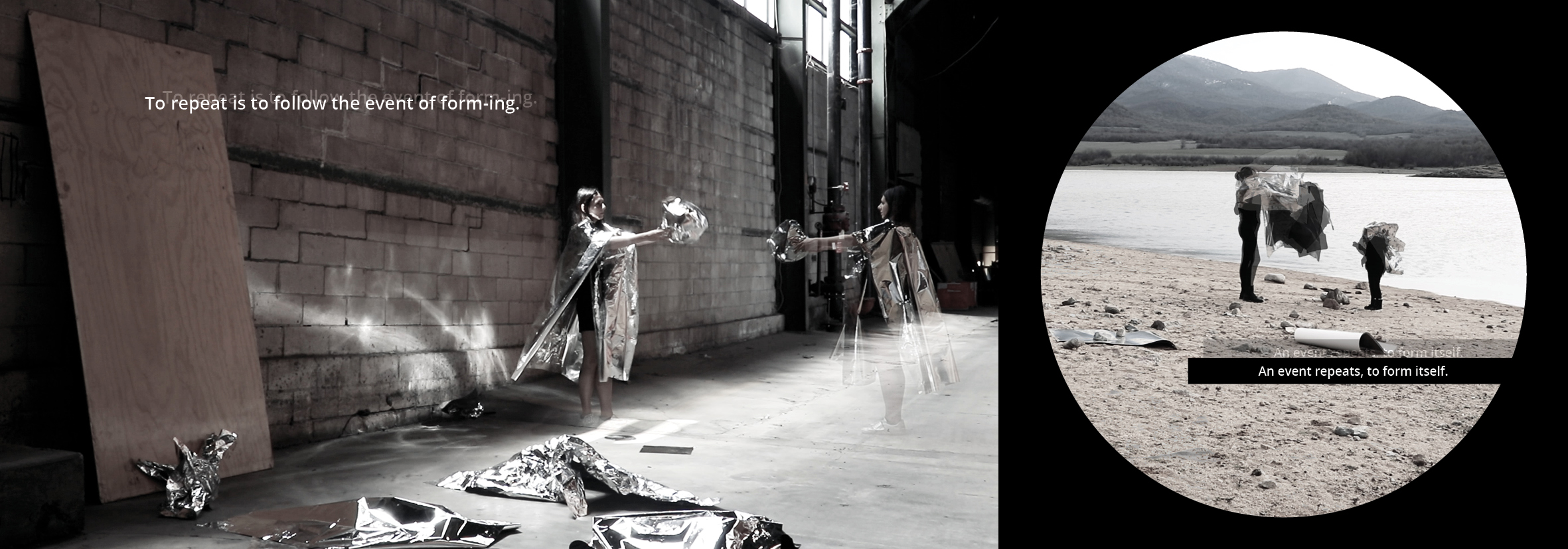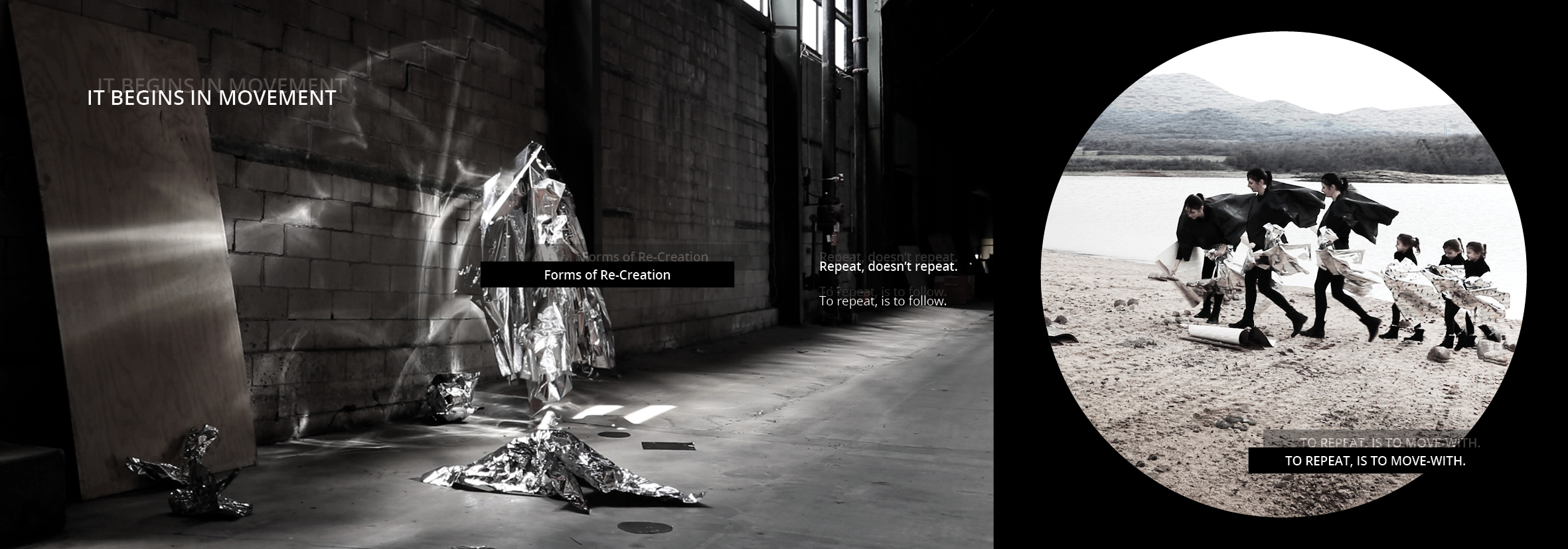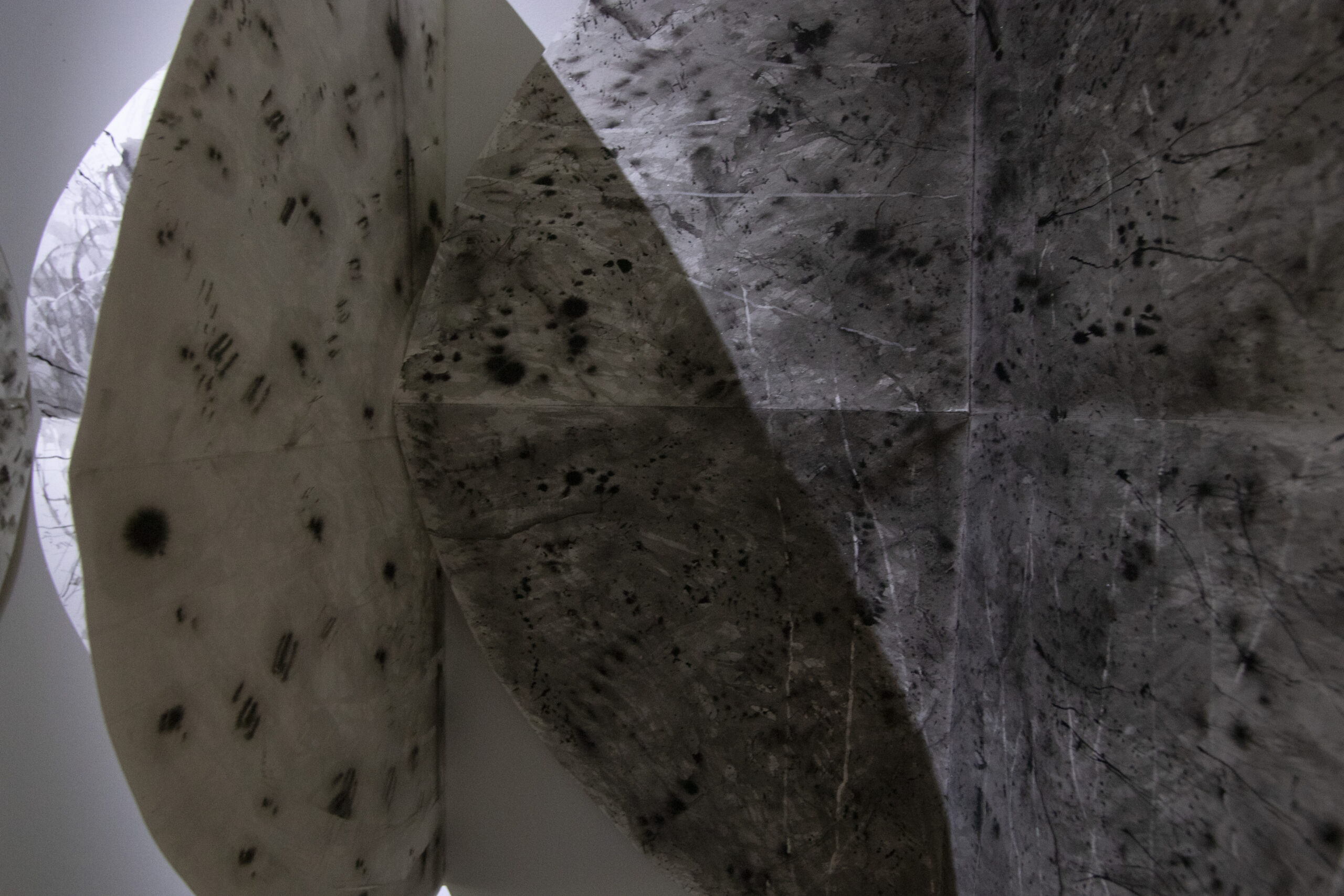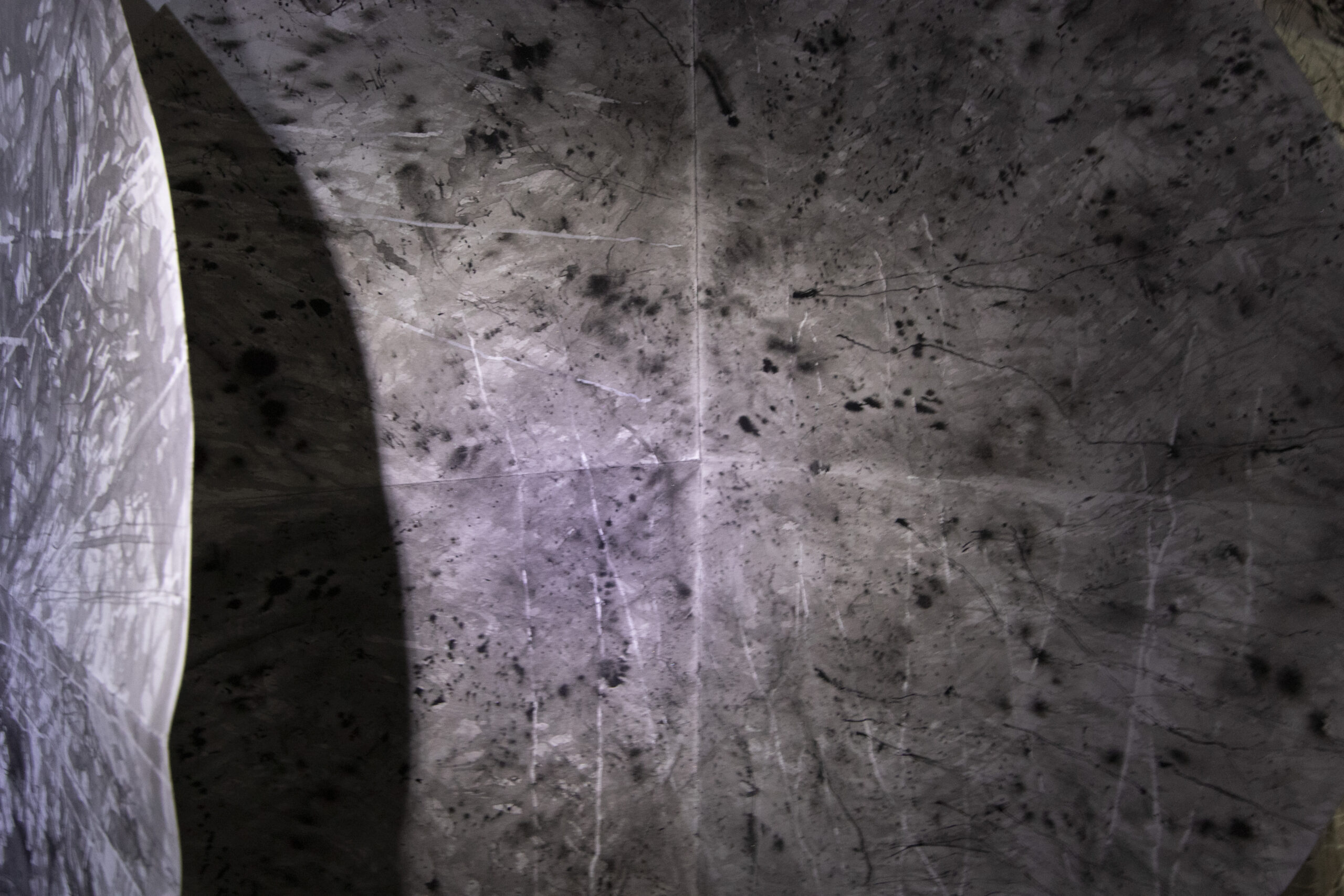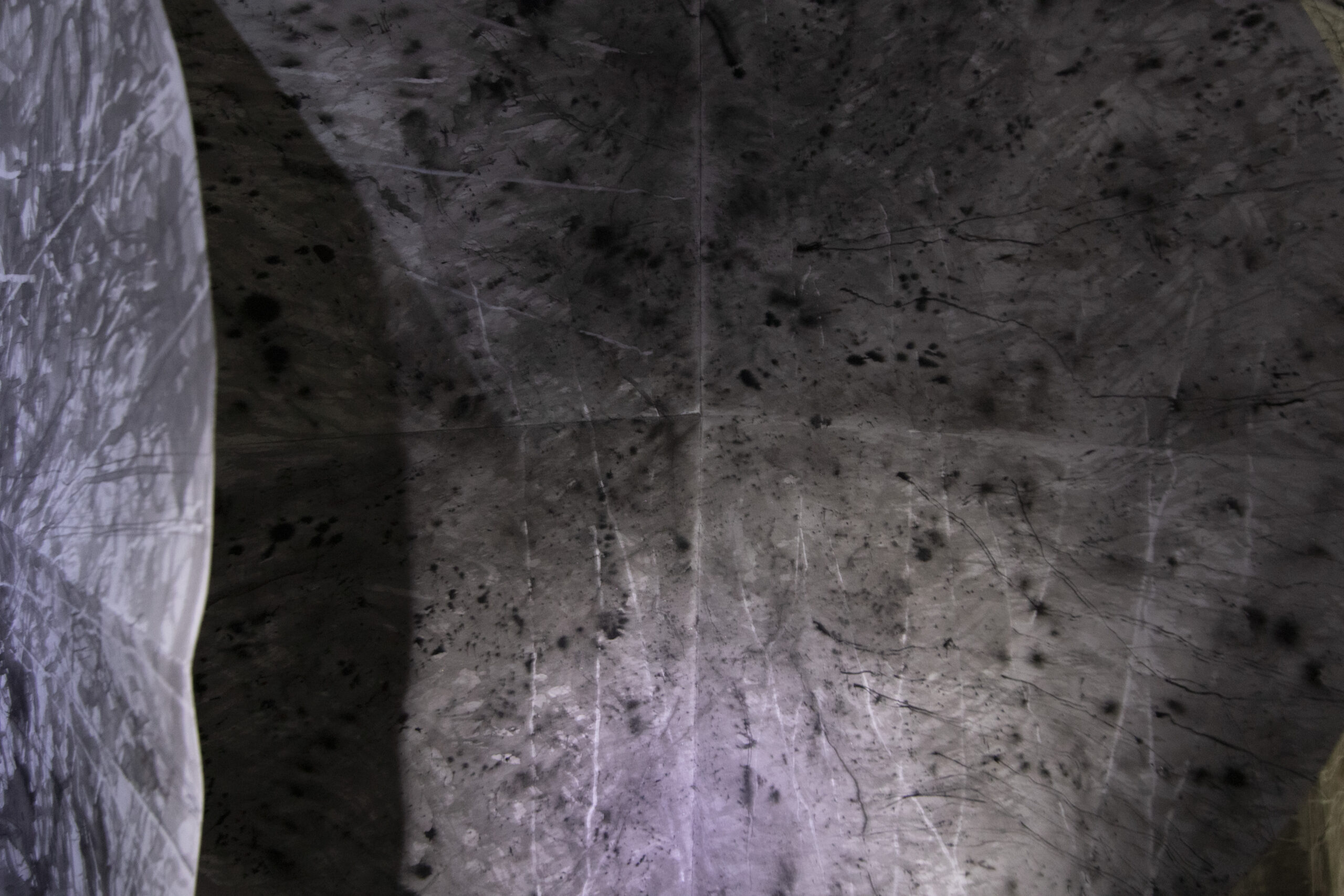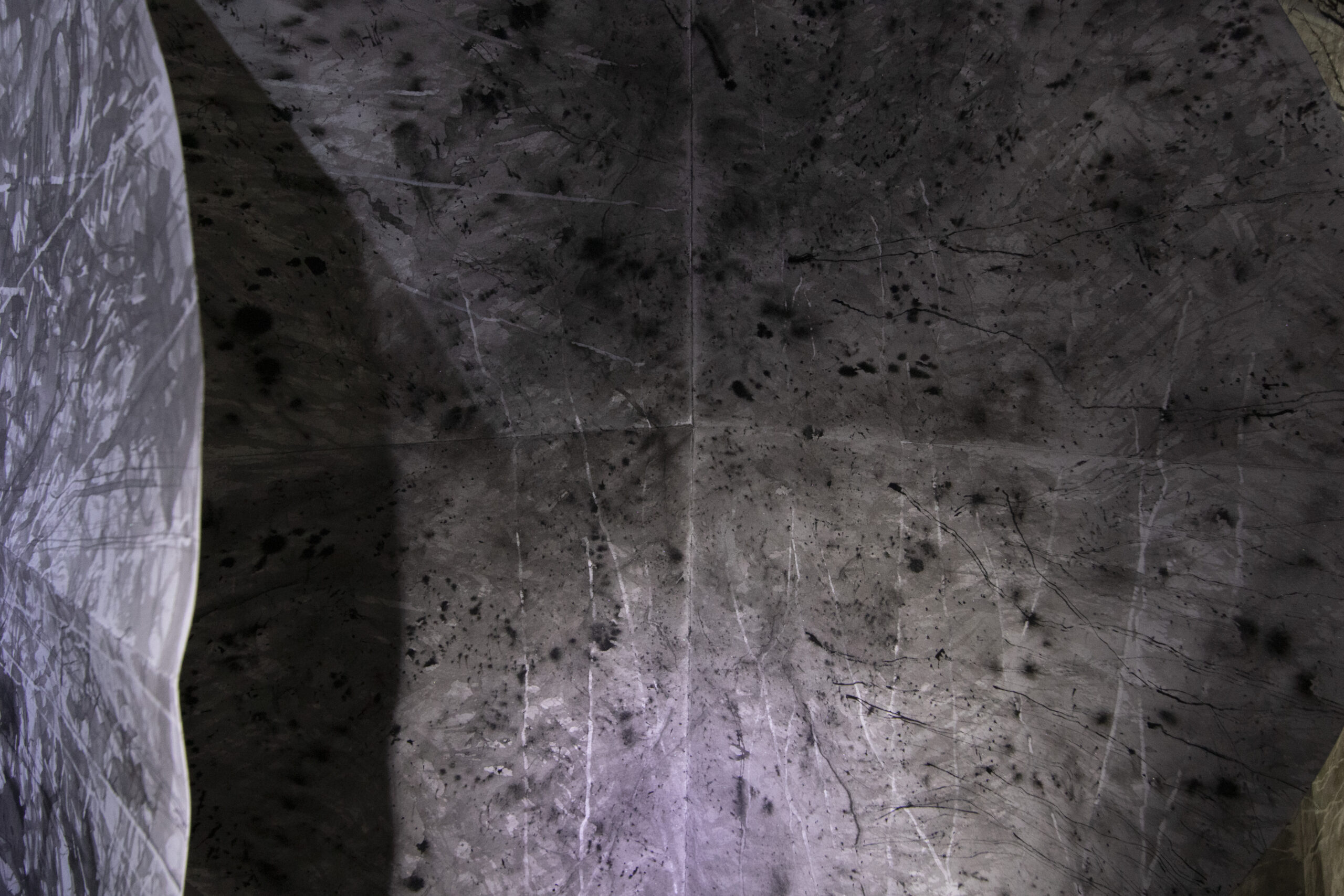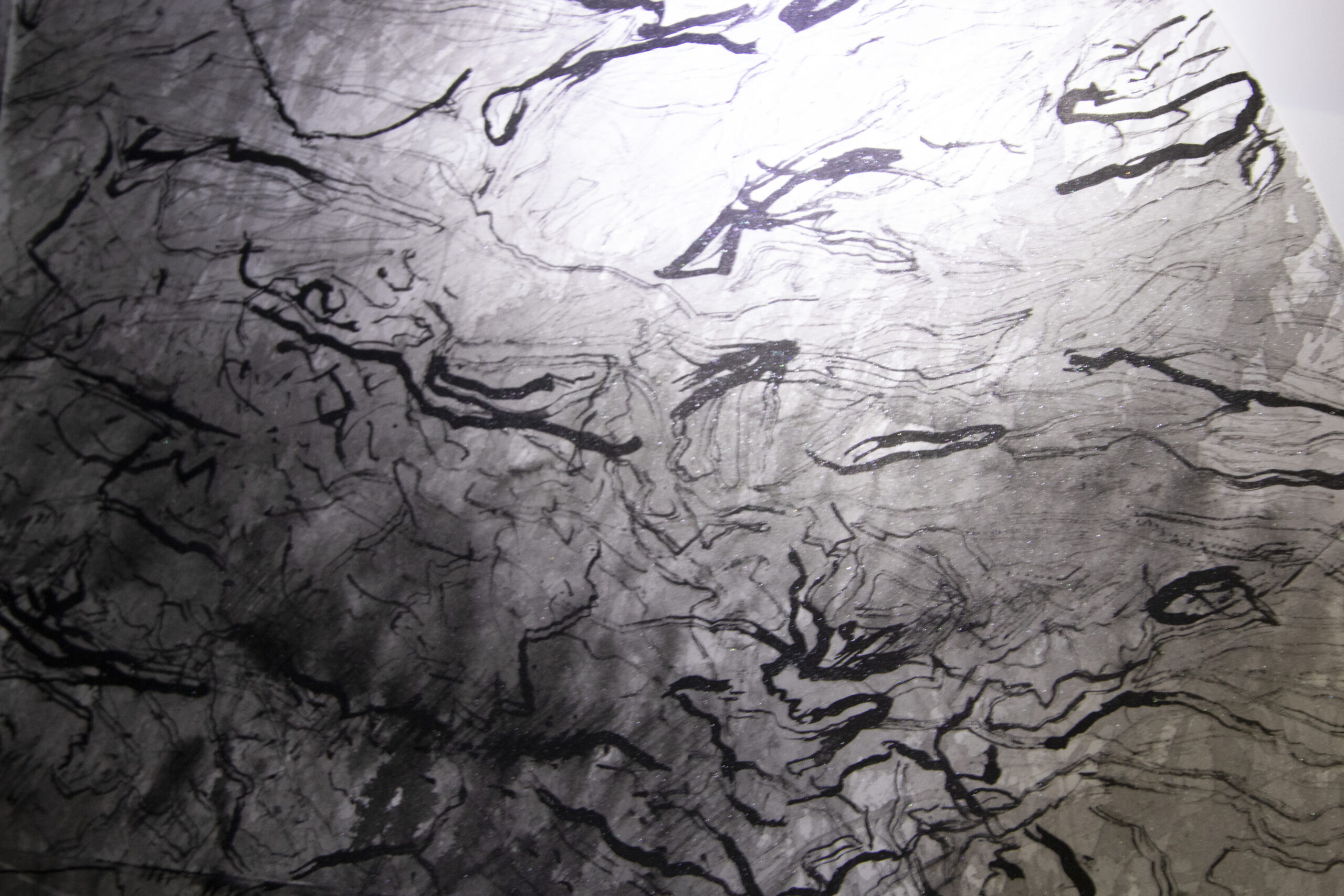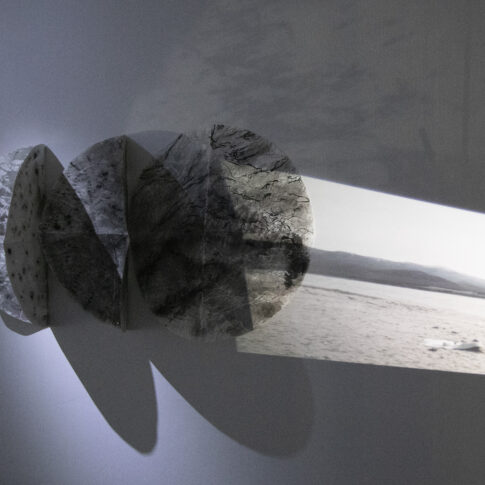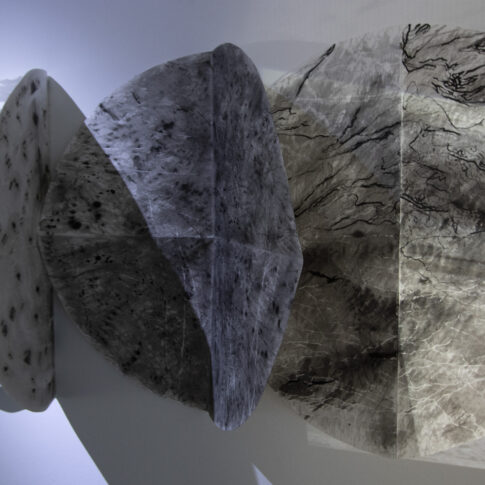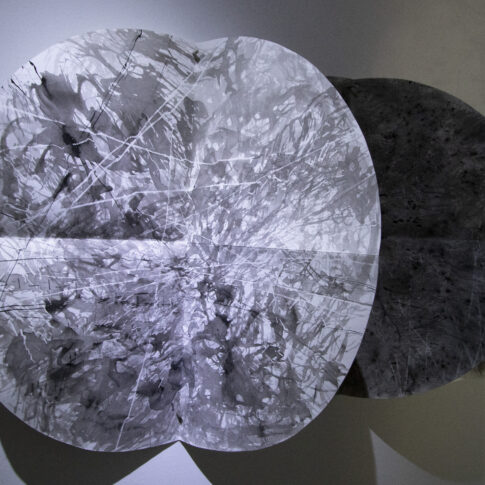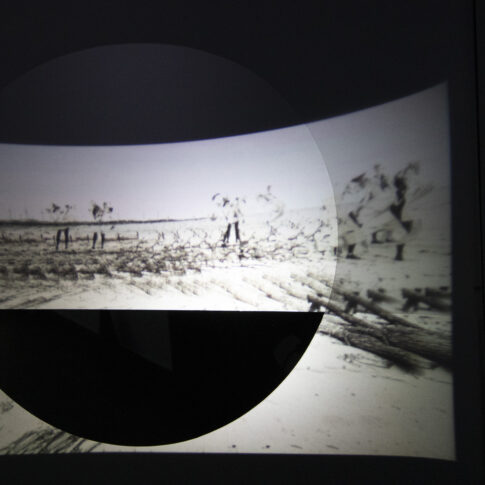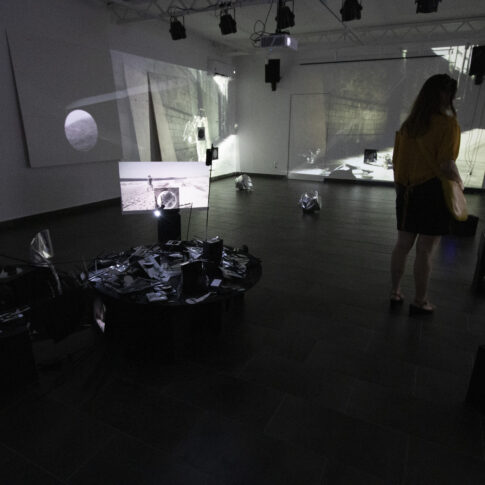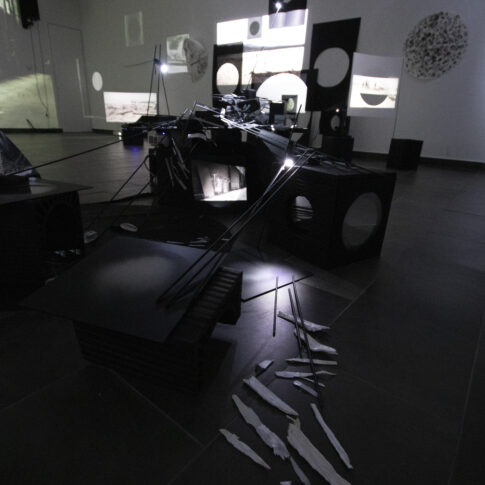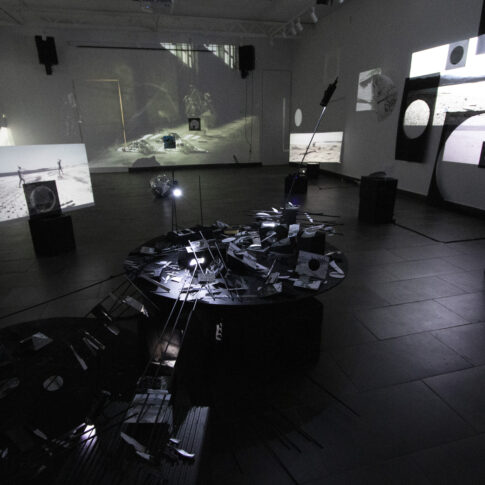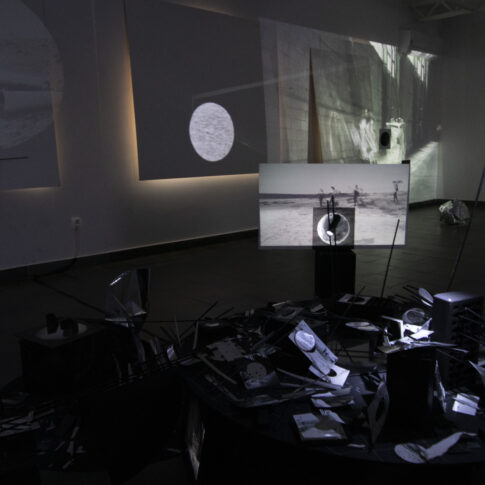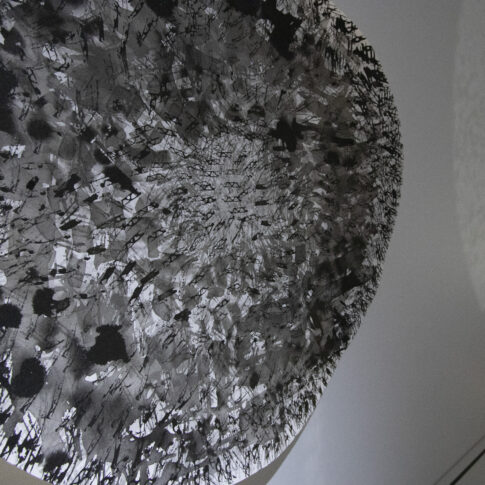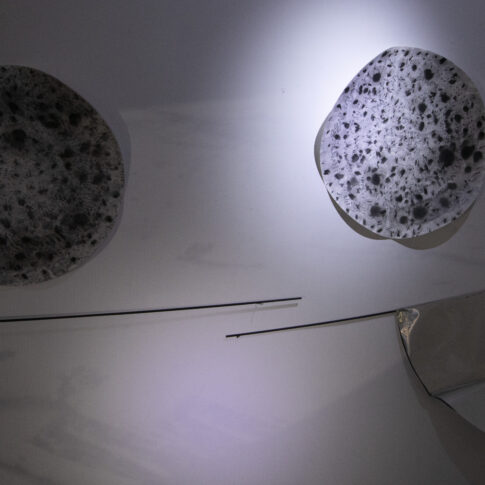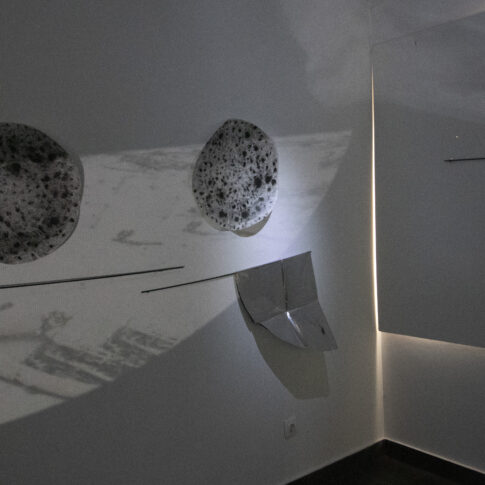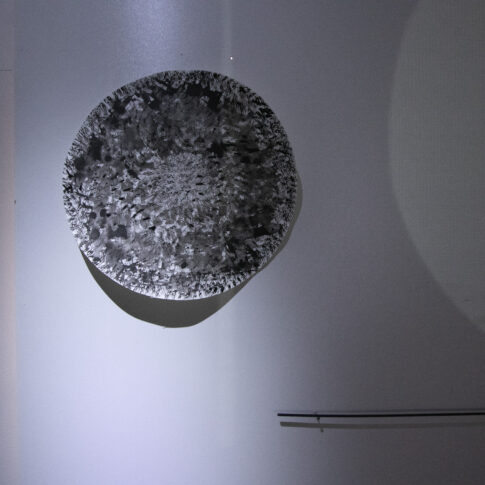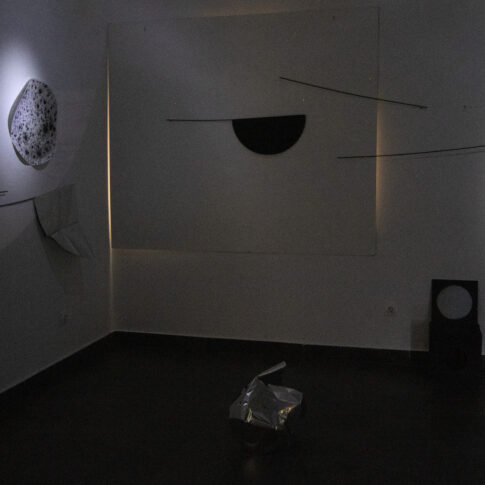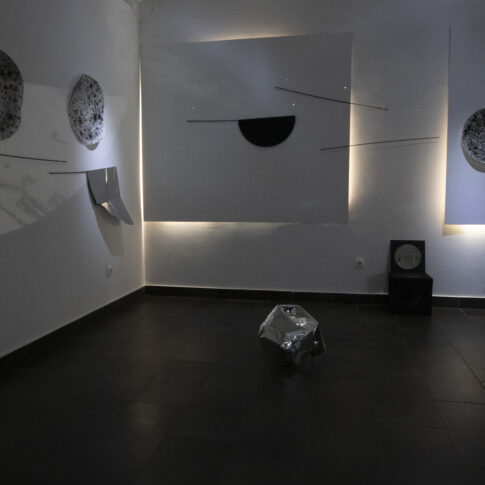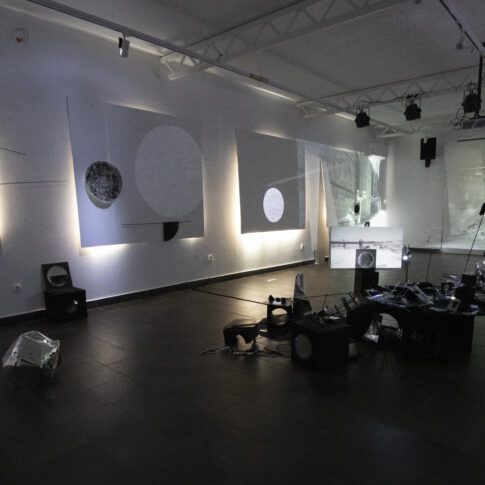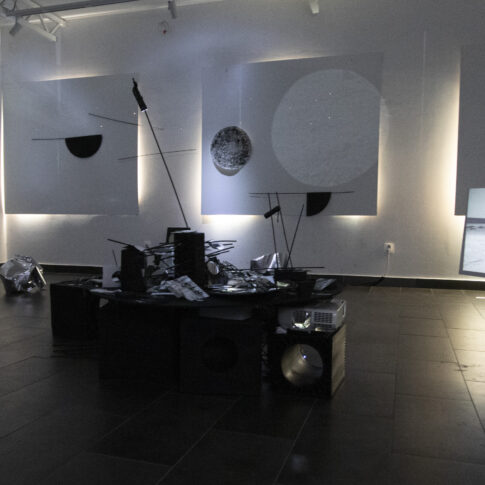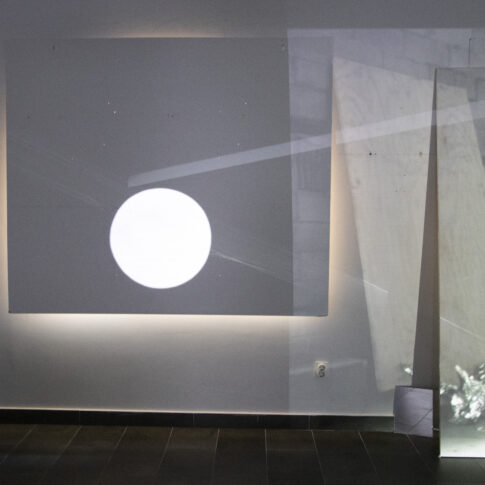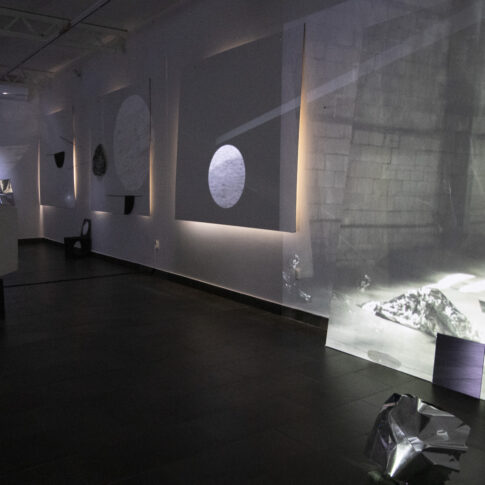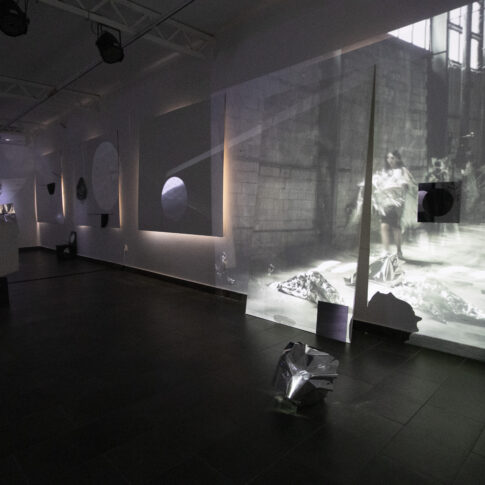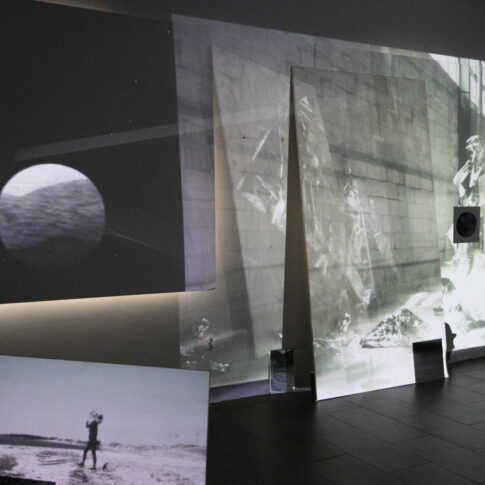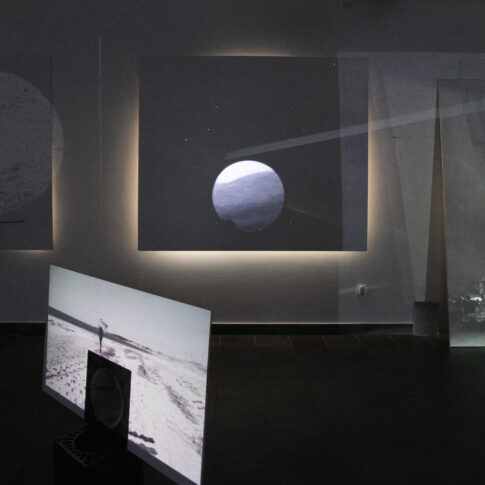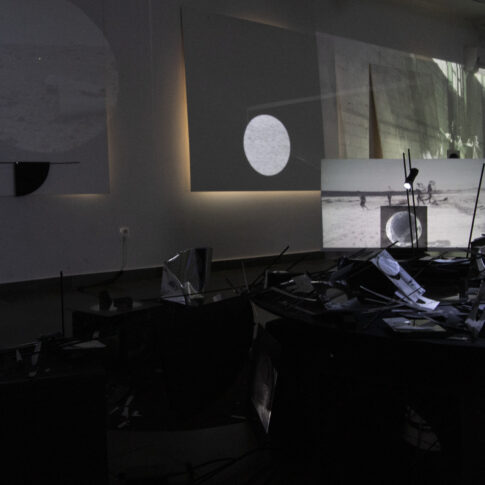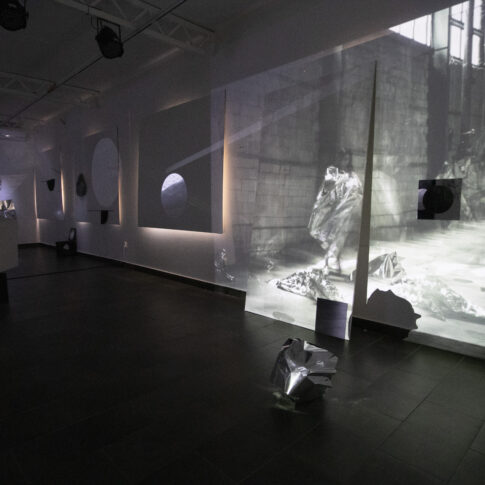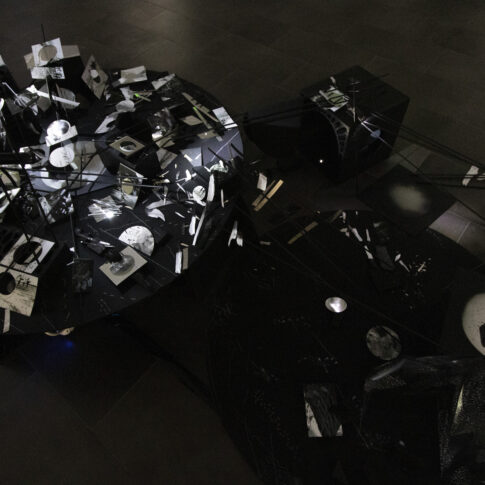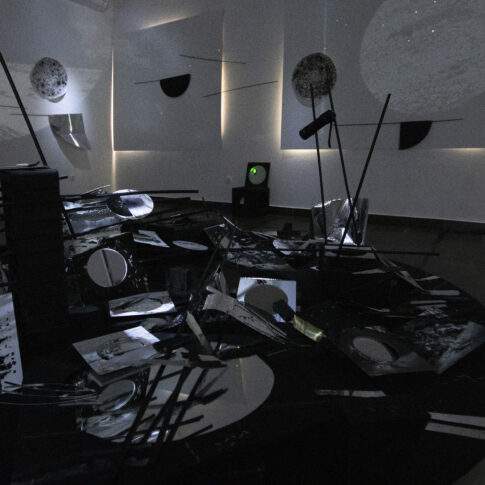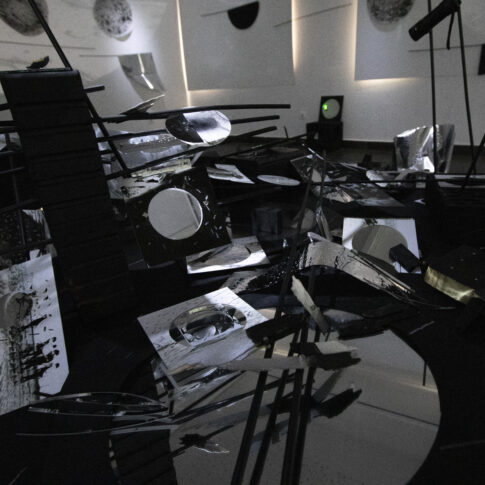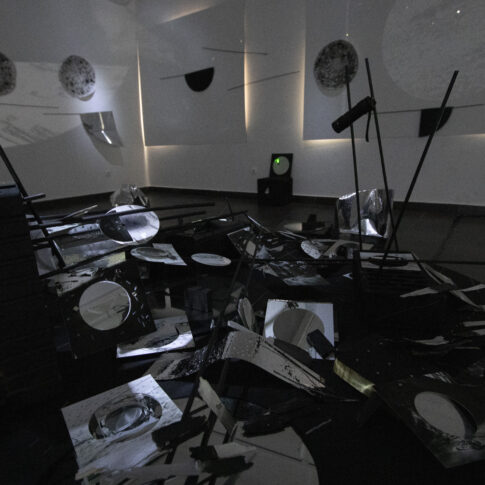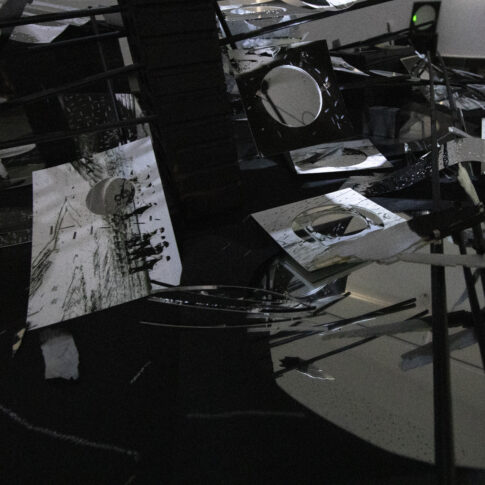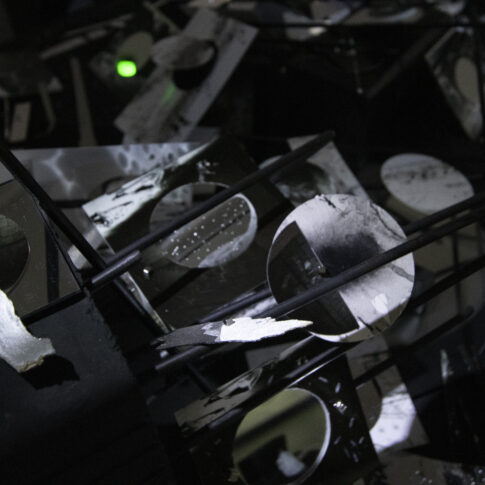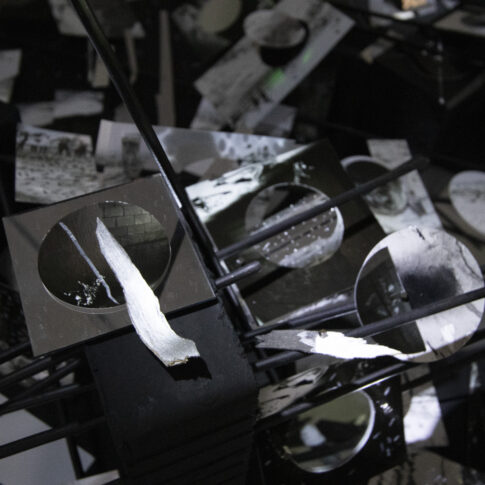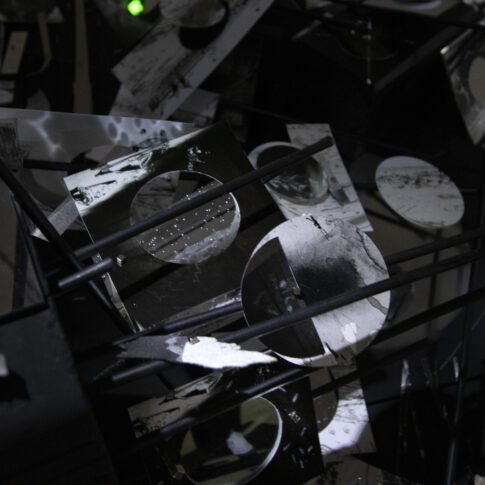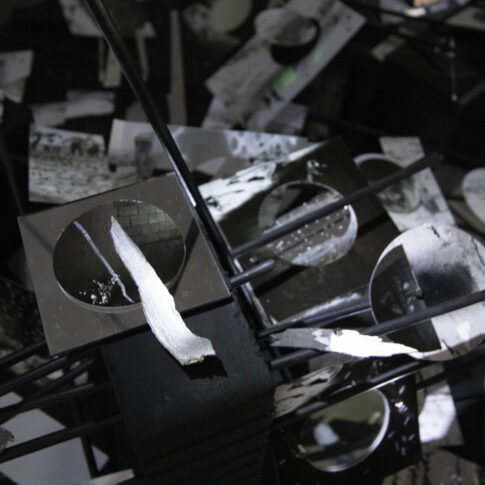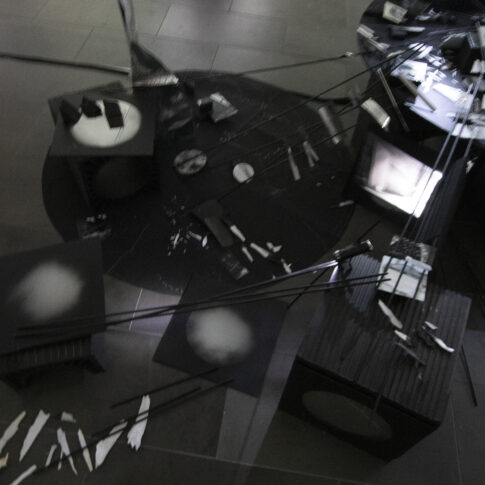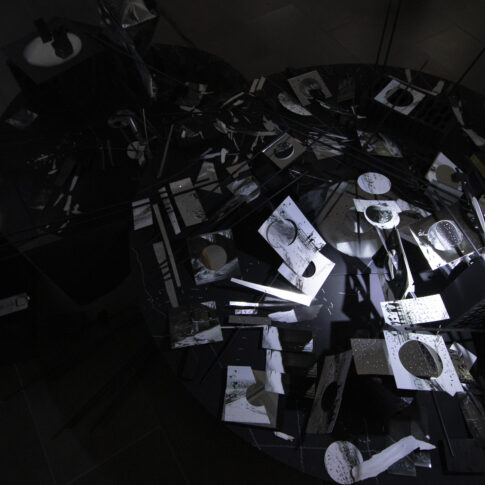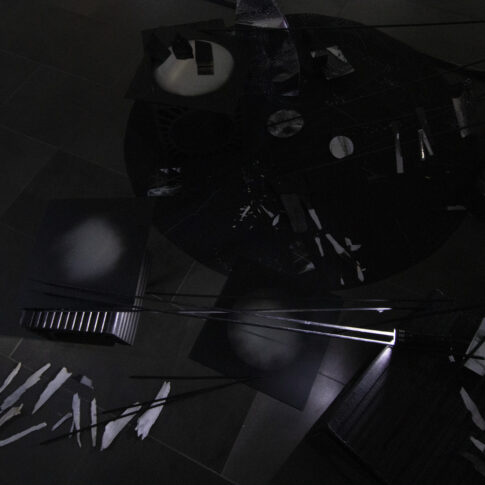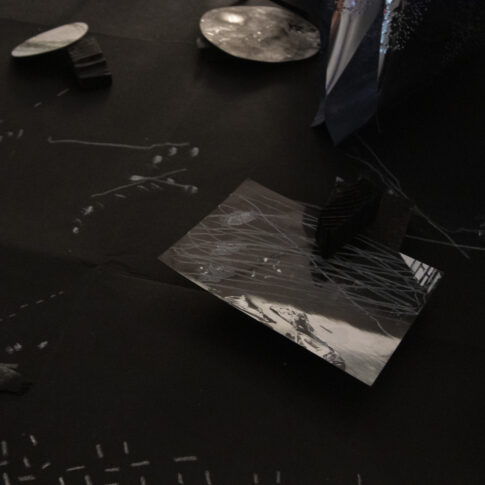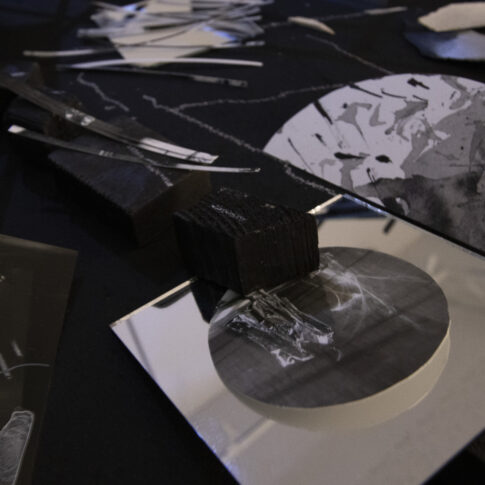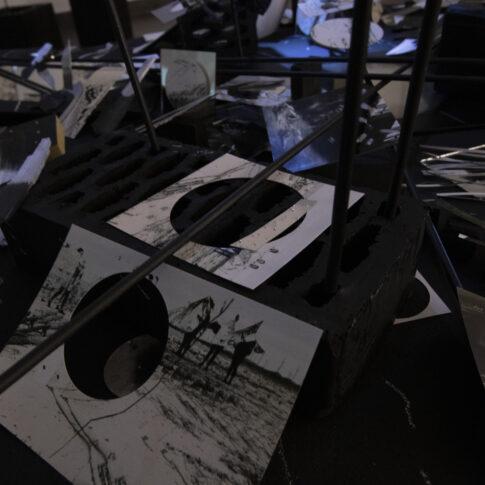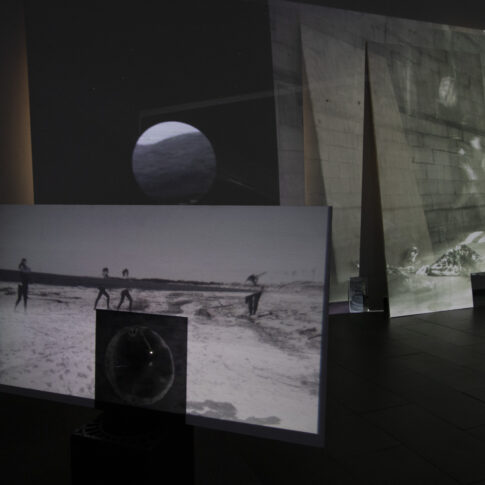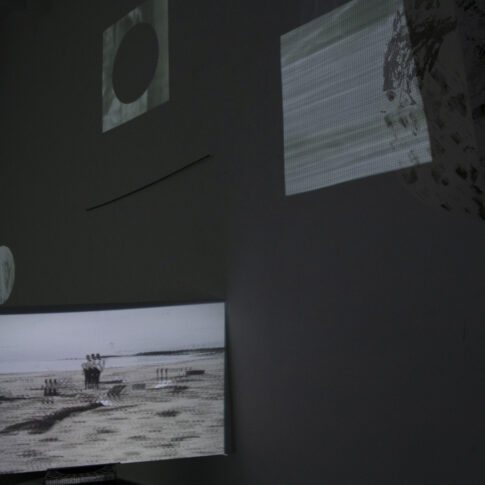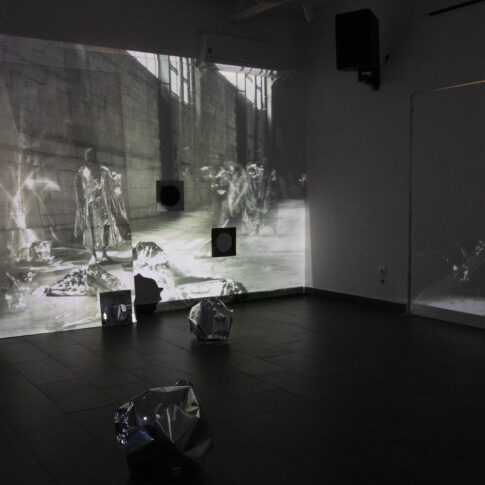Forms of Re-Creation, KSP-Centar Jadro, Skopje, Macedonia
Forms of Re-Creation is a multi-disciplinary event that applies perception methods of ordering in its making. It looks for elasticity in the video as a medium and uses actions of repetition such as repeated movements and sounds, mirroring, partitioned movement, selective looking and listening – all to change our understanding of a single event to an event of forming relations.
AN EVENT REPEATS TO FORM ITSELF
Methods of Ordering:: Perception as a way of ordering
“Methods of Ordering:: Perception as a way of ordering: Forms of Re-Creation” is an ongoing research project that explores perception as a method of ordering and considers it a deliberate improvisation and selective re-creation. Perception becomes a performative act of repetition, where to repeat is to follow the event of form-ing. This approach gives content and form fluidity in their meaning and ways of making. It activates a reciprocal relationship between what is active and activating.
Things are always active in their perception. People are selective listeners, selective viewers. We often bypass much of what is already active and mute some of our sensory experiences. Our perception is guided by our goals, knowledge, awareness, aspirations and limitations. Such predispositions raise important questions about perception and the world we create through our improvised selective processes. How are selective listening, seeing, and moving a method of ordering? What experience do we create with our perception? How can non-selective environments be made in art across media such as video and photography?
“Forms of Re-creation” arrives as part of this investigation. Forms of Re-creation are forms without purpose, created by perception’s methods of ordering. They look for elasticity in mediums such as video, photography, performance, drawing, intervention and use actions of repetition such as repeated movements and sounds, mirroring, partitioned movement, selective looking and listening in the making – all to change our understanding of a single event to an event of forming relations. Here, perception is defined as just that: a form of re-creation.
Credits
Zara Pejovic – Performer
Roberto Zeferino – Original clock sound / Later edited to a triple sound

